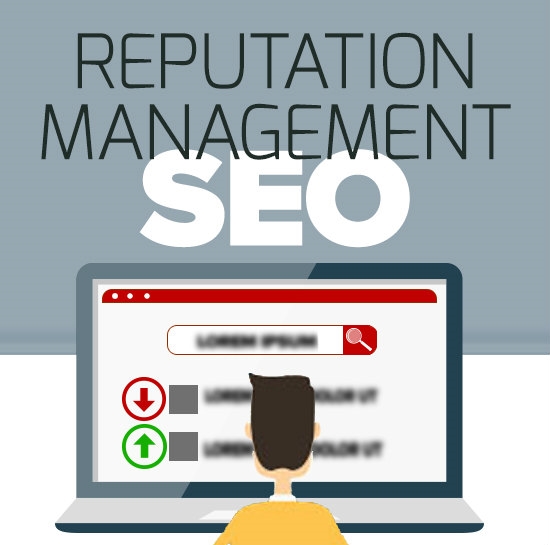— July 30, 2018

What? You mean to tell me that the internet contains anything other than positive vibes, rainbows, butterflies, unicorns, and cute kittens?
The internet is a wondrous tool that allows you to promote your brand and tell your story. However, that doesn’t mean others can’t also share their perspective. Whether these publishers are sharing false or accurate information, you want to make sure you’re doing your best to maintain control of how your story is being told and perceived by the masses. Contrary to popular belief, not all publicity is good publicity.
So, what should an individual or company do when their brand name is returning negative or unwanted results on search engines?
Let’s take a look at some common questions I have been approached with over the years.
- Is there any way to completely remove negative content about my brand from the internet?
- What is Brand Reputation SEO (sometimes called reverse SEO or negative SEO)?
- What steps can I take today towards managing my brand’s reputation in Google search results?
Is there any way to completely remove negative content about my brand from the internet?
Sometimes. Maybe.
Some firms claim to offer this service, but it comes with a hefty price tag and is not guaranteed (Ironistic is not one of those firms). The only real method one can take to remove something from the internet is to contact the webmaster directly and request that it be removed. I find this tactic has a meager rate of success as many authors will not take further action. You also run the additional risk of fueling the fire, inspiring them to write additional content on the matter or promoting the existing content more heavily.
However, keep in mind that if the posted content is genuinely wrong and potentially damaging to you or your business, talk to your lawyer. An official cease and desist letter from a law firm can work wonders at times! There are certain situations where you can have information removed from Google, but in most cases, you will need to contact the webmaster – especially if you want it removed from the internet entirely.
So, if this isn’t the best option – what is? Enter brand reputation management SEO.
What is Brand Reputation Management SEO?
Brand reputation SEO is one tactic to aid in online reputation management through traditional search engine optimization best practices. The concept is simple – when someone does a Google search for your brand name, you want to control as much real estate at the top of search results with positive content so that any potentially harmful or brand-damaging content is buried lower in search results.
What steps can I take today towards managing my brand’s reputation in organic search results?
Let’s take a look at how you can start gaining control over search results through reputation management SEO tactics. Below is the process I use when assisting clients in this very situation.
1) Planning & Strategy
Do your research.
Identify which keyword variations of your brand are returning the unwanted results. Focus on this list for your brand reputation SEO efforts.
Examine existing online properties.
Create a list of all existing sites (on separate domains) that you have control over. This could include your company website, your personal website, social media channels, YouTube videos, managed local listings, and so on. Then, evaluate where your managed web properties rank in relation to the unwanted search results – later, you will focus on optimizing these properties for the keywords identified.
Explore additional opportunities.
Next, determine other opportunities for content generation around your brand name on other domains. Is there an opportunity to put out positive press releases about your brand? Can you find other listings of your business that you could claim and manage? Are there other positive ranking articles by other authors that you could contact and request certain optimization updates be made? Are there videos you have or could produce to be optimized for your brand?
Plan your tactics.
Finally, put together a list of specific tactics you plan to use to regain control of your brand or name in search engine results. I’ve included some general recommendations below; however, these should be custom tailored based on your specific situation.
2) General SEO Tactics and Tips for Building Out Your Task List
Use these SEO best practices to include your name in all existing and newly created positive content.
Include your name as the title tag of the page or post.
The page’s HTML title tag is one of the most important aspects of SEO. Search engine crawlers will look at this to determine what the page is about – so we want them to know it is about you! Keep this in mind for things such as social media profiles and listings sites as well, as most of these sites will default to using your profile name as the title tag.
Include your name in the page URL.
When possible, make sure your name or business name is included in the URL. If you are optimizing for a keyword/name that has multiple words in it, include a special character (typically a hash) between words to indicate a space to web crawlers. For example https://www.ironistic.com/team/hannah-taylor/ or https://www.linkedin.com/in/fosschris/.
Include your name in the content.
Make sure the variation(s) of your name that you are monitoring is within the content of the page. You’ll want to make sure you’re not keyword stuffing but incorporating variations of the brand name naturally within the content.
Include images with keyword rich alt text and file names.
For the content pages you are working on, always include an image of the business or person for which you are optimizing for. Save the image file using a name that corresponds to what you are optimizing for and then add an optimized HTML image alt tag.
Additionally, you can post images on sharing sites such as Pinterest, Twitter, Flickr, Instagram and Facebook with optimized file names. These images may appear in image search results.
Build additional websites.
If you don’t have one already, consider building a website or multiple websites using the identified keywords as the domain and filling it with SEO rich content. The website we developed for Karen Curione is a great example of a resume site that is optimized for Karen’s name.
Build domain authority.
For the websites you own and the positive content you want to promote, you’ll also want to monitor the domain authority and work on improving that over time through high-quality link building. Link building can be time-consuming and challenging, but it is an essential aspect in improving your organic rankings.
Don’t forget about the power of video SEO.
Did you know that YouTube is the second largest search engine behind Google? Your brand name will get searched for directly within YouTube plus YouTube videos can also appear in Google organic search results! I have a whole bag of tricks when it comes to optimizing videos on YouTube so I’ll write about that in my next post. Sign up for our email using the form to the right to see future posts!
Consider adding PPC to your bag of tricks.
If you’re looking for a quick win on taking up some valuable real estate with positive content about your brand, consider running a paid advertising campaign to bid on the keyword you identified earlier. Your ad will appear at the top of the search results and will effectively “push” negative results further down the page.
3) Monitoring & Reporting
This isn’t an overnight fix, so you’ll want to be sure and monitor your progress over time. I recommend setting up some sort of keyword-based web monitoring through free or paid tools so you can be alerted of new negative or positive content around your brand, such as Google Alerts (Free) or Brand24 (paid).
I also strongly recommend putting together progress reports on a regular basis. Take screenshots of the search engine results from your keyword list previously identified before you start implementing the tactics below. Then, periodically take screenshots of the same results so you can compare over time. I like to highlight the negative mentions in red and report on how many unwanted results are showing up on the first. Do this for any search engine (Google, Bing, Yahoo!, YouTube, etc.) that you are concerned about.
4) Get to Work
At this point, you’ve evaluated the situation, put together your plan of tactics, and are ready to start monitoring your progress. Now the real work begins. Start by identifying the “low hanging fruit” based on what you think will have the most significant impact and focus on those tactics first. I suggest putting all of the tactics you’ve identified into a task list and prioritizing them based so you can make sure you’re spending your time in the best way possible.
Digital & Social Articles on Business 2 Community
(77)
Report Post









